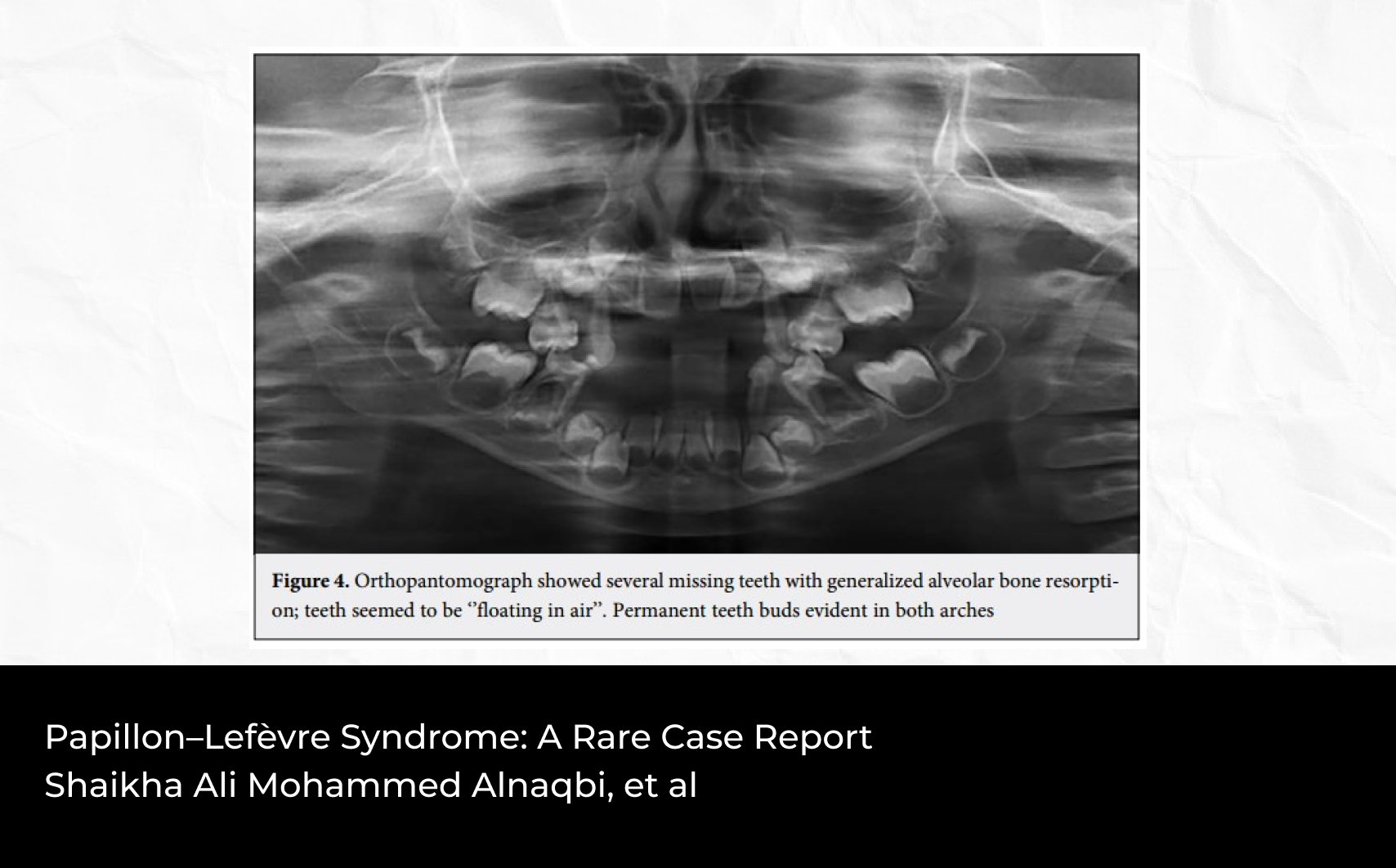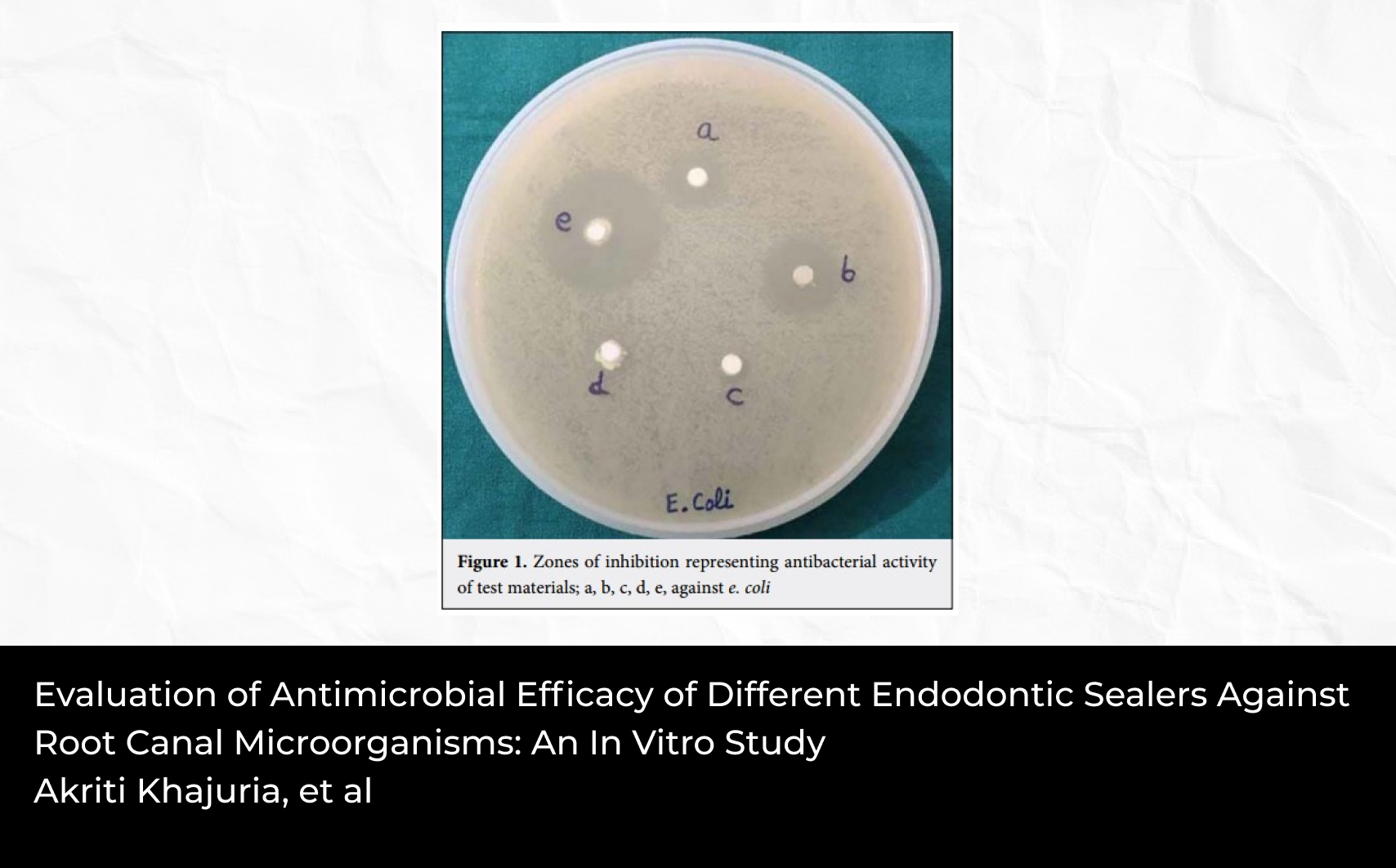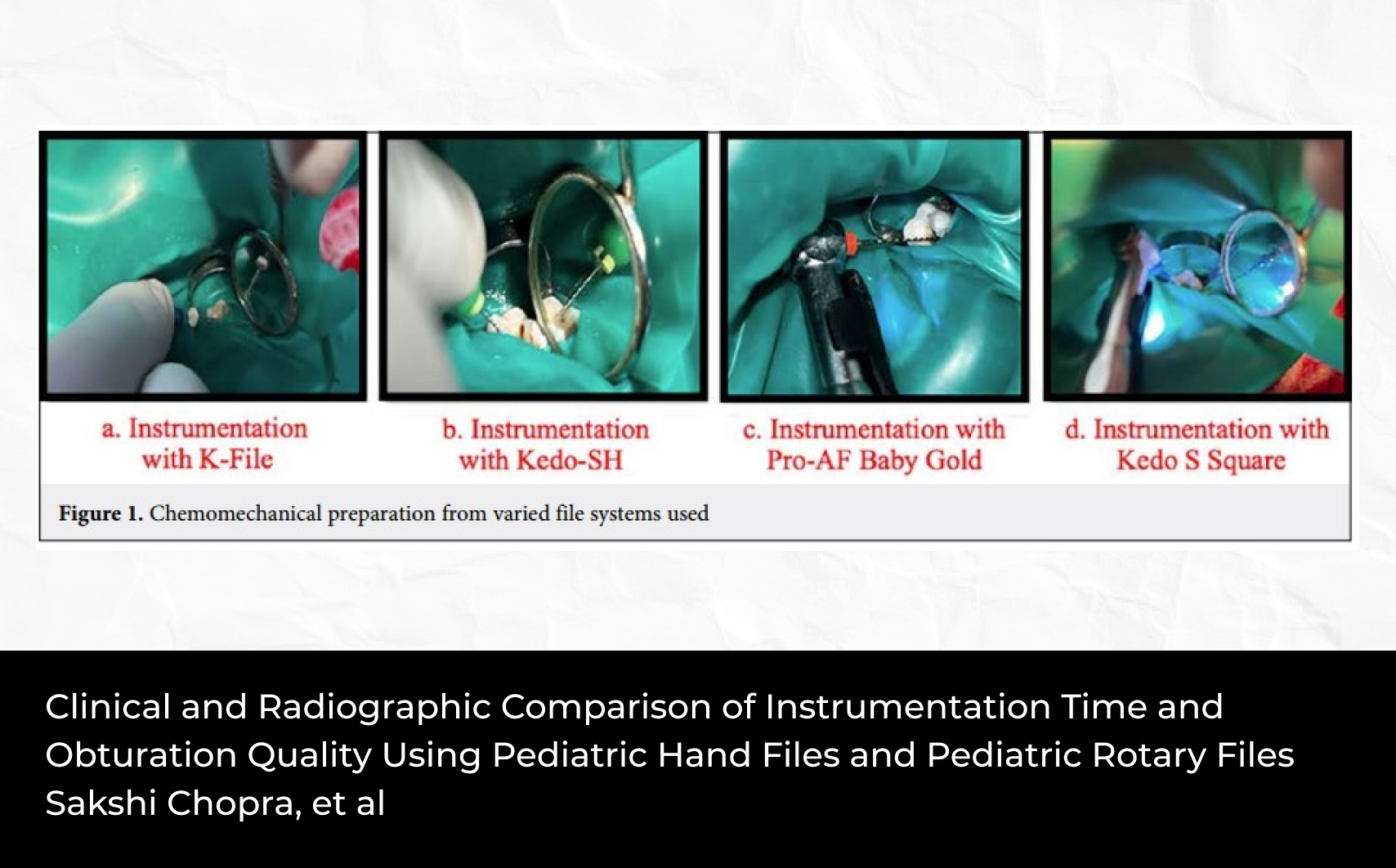2Department of Microbiology Himachal Dental College, Mandi, Himachal Pradesh
3Department of Pedodontics and Preventive Dentistry, Guru Nanak Dev Dental College and Research Institute, Sunam, Punjab, India
Abstract
To determine the effect of metallurgy and taper on primary teeth root canals infected with Enterococcus faecalis, by stainless steel (SS) and nickel-titanium (Ni-Ti) endodontic files. Ninety primary teeth root canals were used, in which the canals were sterilized after being enlarged with #15 K-fi le and then contaminated with an inoculation of a broth of E. faecalis. The teeth were divided into two groups, A and B. A is served as the control group and B as an experimental group. Experimental group was further divided into fi ve subgroups (subgroup B1 – SS K-files: 2% taper, B2 – SS H-fi les: 2% taper, B3 – SS Flare fi les: 5% taper, B4 – Ni-Ti: 2% taper, and subgroup B5 – Ni-Ti: 6% taper) based on the metallurgy and taper of different endodontic files used for instrumentation. The post bacterial samples were collected, and were seeded on plates for analysis. After the incubation period, analysis of colony forming units/200 μL was done. The data thus obtained were subjected to statistical analysis. Ni-Ti H and ProTaper group: The 6% taper showed a signifi cant bacterial reduction (P < 0.05) and produced cleaner canals than SS K-files: 2% taper, SS H-fi les: 2% taper, and Ni-Ti K-files: 2% taper. However, there was not much of difference between Ni-Ti H and ProTaper: The 6% taper and SS Flare fi les: The 5% taper (P > 0.05). It was concluded that metallurgy does not play a signifi cant role in cleaning efficiency of root canals, whereas taper does influence the bacterial reduction and hence produce cleaner canals in primary teeth.














